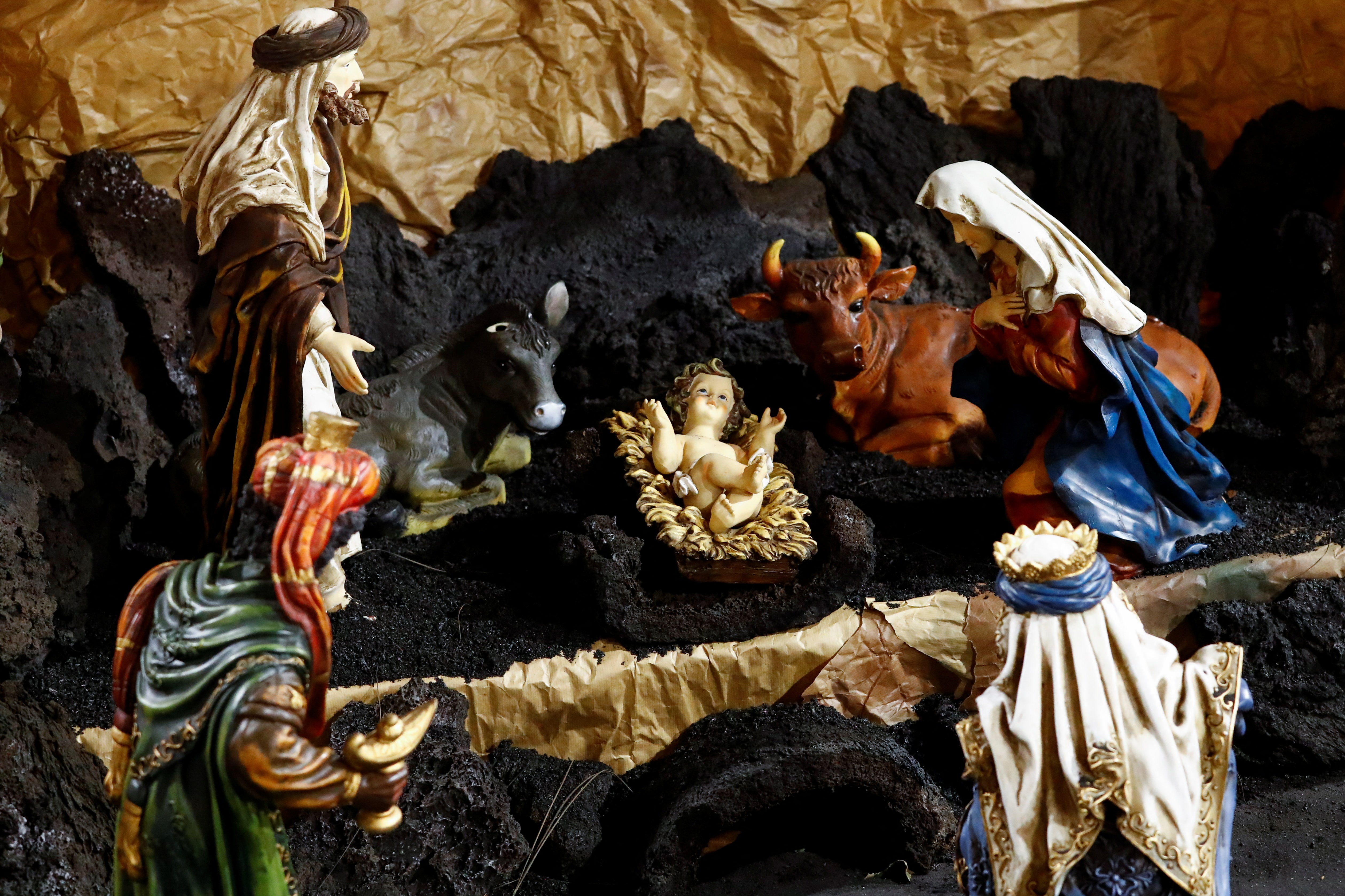Priest and geologist make La Palma nativity scene from volcanic ash
The three-month long eruption has wrought havoc for residents on the Spanish island

Volcanic ash and lumps of lava blasted out of the Cumbre Vieja volcano on the Spanish island of La Palma have become part of Christmas nativity scene in a nearby church.
Domingo Guerra, the priest at Tajuya church, and Ruben Lopez, a geologist with the Spanish geographical institute, wanted to use volcanic debris for the nativity to mark the near three-month long eruption that has caused havoc for local residents.
“We are doing it with lava, ashes and lapilli (volcanic rock fragments), so that it has a representation of the volcano, as we are only three kilometres away and this afternoon (Monday) we could even hear the explosions,” Mr Lopez, 42, said.
“We wanted to do an initiative for the Christmas spirit, in a place like this, where people are sad and very worried,” he added.
Mr Guerra, 65, said Mr Lopez had looked for the material for the nativity in areas covered by lava and volcanic rocks.
The nativity, which is in front of the altar, has the cradle for baby Jesus placed on chunks of black lava, while rocks form a backdrop for the scene and volcanic ash is scattered around the three wise men.
The eruption, which has sent rivers of molten lava running down the slopes of Cumbre Vieja for weeks, is the longest running on the Spanish Canary Island since records began in 1500.
Since the eruption began on 19 September, thousands of people have been evacuated, at least 2,910 buildings have been destroyed, and the main livelihood of the island, banana plantations, are threatened.
Reuters
Join our commenting forum
Join thought-provoking conversations, follow other Independent readers and see their replies
Comments


Bookmark popover
Removed from bookmarks